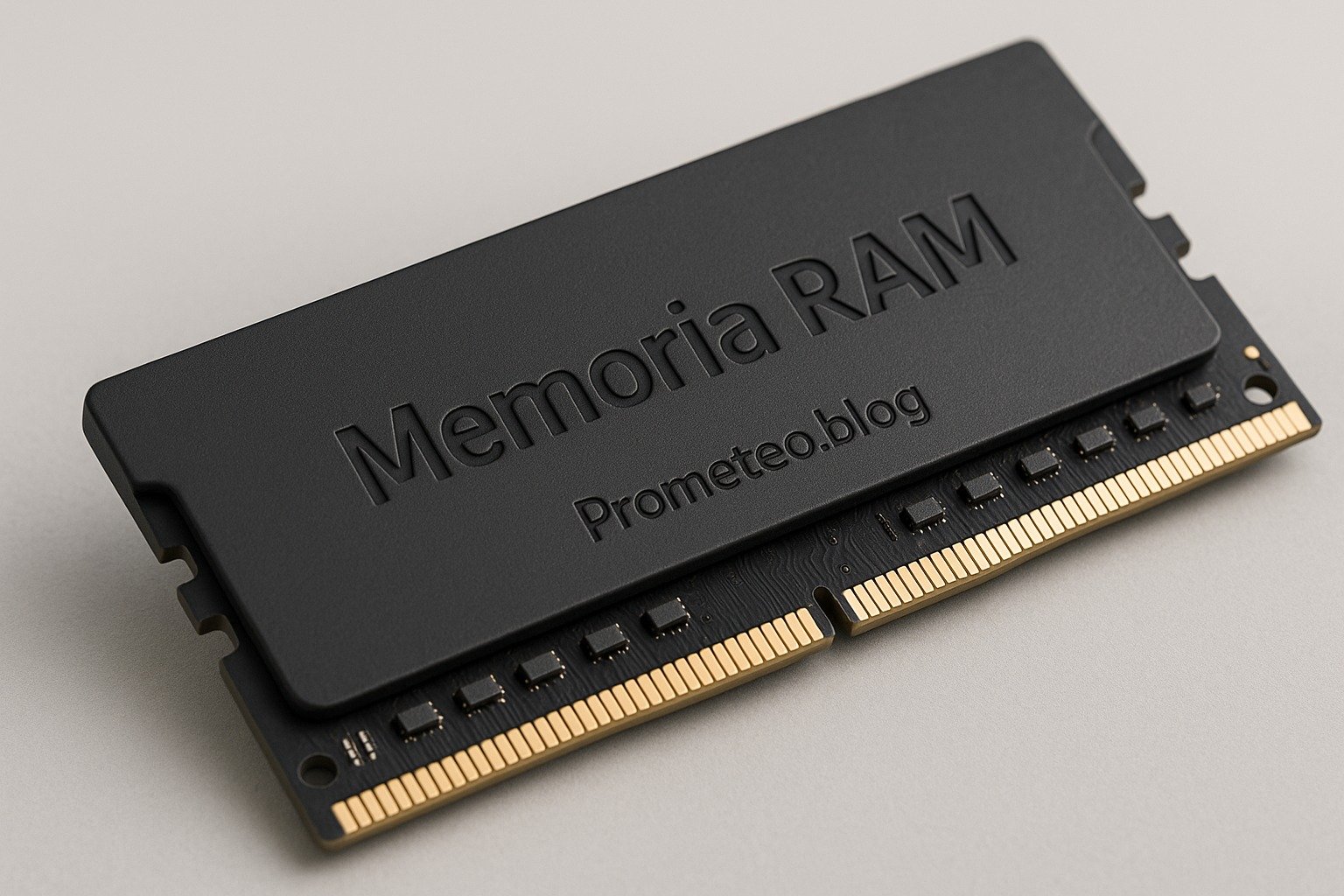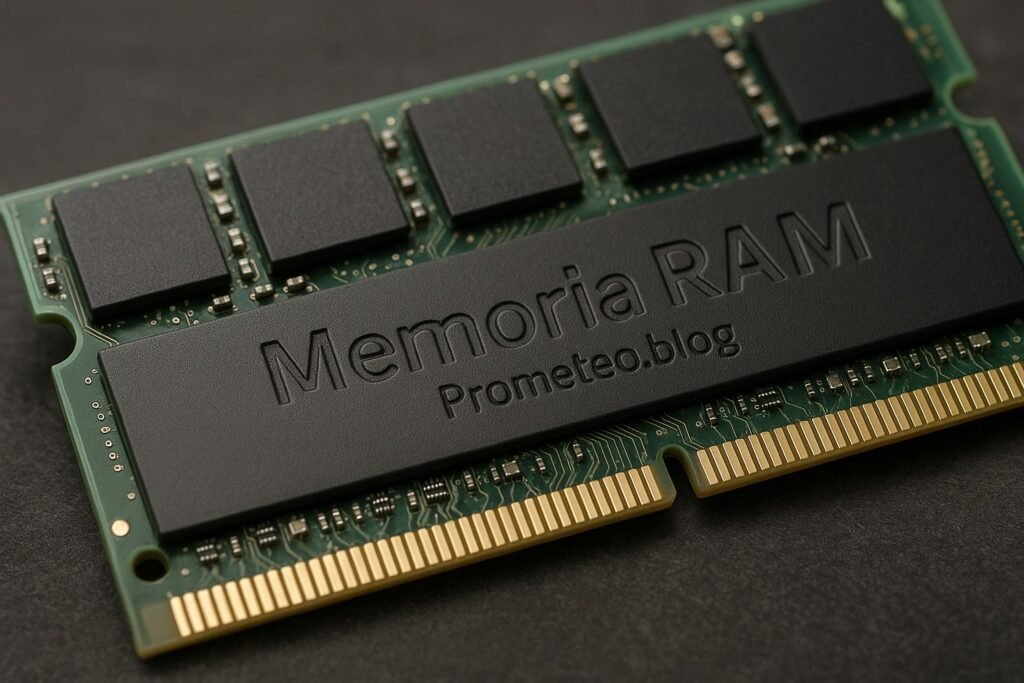Introduction
Have you ever wondered why your computer becomes sluggish when you have too many applications open? I remember the first time I experienced that frustration. I was working on an important project and suddenly, everything slowed down. That’s when I learned about Memoria RAM and its crucial role in computing. Understanding RAM is essential for anyone who uses a computer, whether for casual browsing, gaming, or professional work. In this tutorial, we will delve deeper into the fundamentals of RAM, how it functions, its applications, best practices, and a practical use case to illustrate its importance.
Fundamentals
Memoria RAM, or Random Access Memory, is a fundamental component in any computer system. It serves as the short-term memory of your computer, allowing it to store data temporarily for quick access. RAM is essential for effective multitasking and overall system performance. When you run applications, they temporarily store data in RAM to enable quick access, which is crucial for the smooth operation of your system.
When you power on your computer, the operating system and essential applications are loaded into RAM. This allows the processor to access data rapidly, enhancing the speed and efficiency of operations. Unlike storage drives, such as SSDs or HDDs, RAM is volatile. This means that all data stored in RAM is lost when you power off your device. Therefore, while RAM is critical for active processes, it does not serve as permanent data storage.
To illustrate how RAM works, imagine you are preparing a meal. The ingredients you need represent your data, the kitchen symbolizes your RAM, and the cooking process is your CPU. If your kitchen (RAM) is small, you can only prepare a limited number of dishes (data) at once. However, if your kitchen is spacious, you can manage multiple recipes simultaneously, making the cooking process much smoother.
Types of RAM
There are various types of RAM, but the most common ones include:
-
DRAM (Dynamic RAM): This type of RAM needs to be refreshed thousands of times per second, as it stores data in capacitors that leak charge over time. DRAM is the most widely used type of RAM in personal computers due to its cost-effectiveness and adequate performance for most applications.
-
SRAM (Static RAM): Unlike DRAM, SRAM does not need to be refreshed as often. It uses flip-flops to store data, resulting in faster access speeds but at a higher cost. SRAM is typically used in cache memory for CPUs because of its speed and reliability.
-
SDRAM (Synchronous Dynamic RAM): This type of RAM synchronizes with the system clock, allowing for faster data access and improved performance compared to traditional DRAM. Variants of SDRAM, such as DDR (Double Data Rate) SDRAM, have become the standard in modern systems.
Each type of RAM plays a role in how systems operate. While DRAM is widely used in personal computers due to its cost-effectiveness, SRAM is often found in cache memory for CPUs because of its speed. The choice of RAM type can significantly influence the performance of a computer system.
How RAM interacts with the CPU
Whenever you open a program, the CPU sends a request to RAM. The data for that program is pulled into RAM from your storage drive. Once it’s in RAM, the CPU can access it quickly, which is why having more RAM can lead to better performance. Furthermore, when you switch between applications, the operating system typically keeps recently used programs in RAM, allowing for a seamless user experience.
In modern computing, multitasking is commonplace. Therefore, the ability of RAM to hold multiple applications at once is vital. When you have enough RAM, your computer can handle running various programs simultaneously without lag. If you don’t have enough RAM, your system will have to swap data back and forth between the storage drive and RAM, which significantly slows down performance.
The speed of RAM
RAM speed is often measured in megahertz (MHz) or gigahertz (GHz), indicating how many cycles per second the memory can perform. Higher speeds mean faster data access, which can improve overall system performance. However, speed alone isn’t the only factor to consider. Bandwidth, which is the amount of data that can be transferred in a given time, also plays a crucial role in RAM performance.
The speed of RAM can be influenced by various factors, including the type of RAM, the motherboard’s capabilities, and the CPU. For example, DDR4 RAM typically operates at speeds ranging from 2133 MHz to 3200 MHz, while the newer DDR5 can offer even higher speeds. When upgrading RAM, it’s essential to ensure that the new modules are compatible with your motherboard and CPU to take full advantage of their speed capabilities.
RAM capacity
The capacity of RAM is equally important. More RAM allows for more applications to run simultaneously and improves the performance of memory-intensive tasks, such as video editing or gaming. As applications become more demanding, having sufficient RAM becomes essential for a smooth experience. Most modern systems come with varying RAM capacities, often ranging from 4GB to 64GB or more.
For general computing tasks, 8GB of RAM is often sufficient, while gamers and professionals working with resource-intensive applications may benefit from 16GB or more. As software continues to evolve and demand more resources, it’s wise to consider future-proofing your system by opting for higher RAM capacity when possible.
Why RAM matters for gaming and productivity
In gaming and productivity tasks, RAM can be the difference between a smooth experience and frustrating lag. Games and applications that require a lot of memory will benefit from having more RAM. For instance, video editing software, graphic design tools, and high-end games all demand significant amounts of memory to function effectively. Therefore, if you’re into gaming or any kind of intensive work, investing in adequate RAM is a wise choice.
Many modern games recommend a minimum of 16GB of RAM for optimal performance. This requirement ensures that the game can load textures, assets, and other critical data quickly, reducing loading times and preventing stuttering during gameplay. Similarly, professional applications such as Adobe Premiere Pro or Autodesk Maya benefit greatly from additional RAM, allowing for smoother editing and rendering processes.
Conclusion of how RAM works
Ultimately, RAM plays a vital role in the overall function of your computer. It facilitates quick data access, supports multitasking, and enhances the user experience. Understanding how RAM functions will empower you to make informed decisions when optimizing your computer system.
Good Practices and Limitations
While understanding RAM is crucial, it’s equally important to adopt good practices and be aware of limitations:
Good Practices
-
Assess Your Needs: Determine how much RAM you require based on your typical usage. If you primarily use your computer for browsing and word processing, 8GB may suffice. However, if you engage in gaming or video editing, consider 16GB or more.
-
Opt for Quality Brands: When purchasing RAM, choose reputable brands known for reliability and performance. Quality components can make a significant difference in system stability.
-
Consider Dual-Channel Configurations: If your motherboard supports it, utilize dual-channel RAM configurations. This setup can enhance bandwidth and improve overall performance.
-
Monitor Performance: Use system monitoring tools to keep an eye on RAM usage. This practice can help you identify if you need an upgrade or if certain applications are consuming excessive memory.
Limitations
-
Volatility: Remember that RAM is volatile, meaning all stored data is lost when power is turned off. Ensure you save your work frequently to avoid data loss.
-
Compatibility: Always check your motherboard specifications before upgrading RAM. Not all RAM types and speeds are compatible with every system.
-
Diminishing Returns: Adding more RAM beyond a certain point may yield diminishing returns in performance. For most users, 16GB is adequate, while professionals may require 32GB or more.
-
Cost: Higher capacity and faster RAM can be expensive. Balance your performance needs with your budget to make the best decision.
Concrete Use Case
Let’s consider a practical scenario to illustrate the importance of Memoria RAM. Imagine you are a graphic designer working on a high-resolution project using software like Adobe Photoshop. You have multiple images open, each with layers, filters, and effects. This process undoubtedly consumes a significant amount of RAM.
In this situation, having sufficient RAM allows you to work without interruptions. For instance, if your computer has only 4GB of RAM, you might notice lag as you switch between applications or try to render effects on your images. In contrast, if your system has 16GB of RAM, you can easily manage multiple heavy applications simultaneously.
Moreover, let’s say you decide to run a video editing program alongside Photoshop. With 4GB of RAM, your computer might freeze or crash due to insufficient memory. However, with 16GB or more, you can seamlessly switch between tasks, enhancing your workflow and productivity.
Different Configurations
In this use case, the RAM configuration is crucial. For example, if you’re using dual-channel RAM (two sticks instead of one), you can take advantage of increased bandwidth, leading to even better performance. This configuration enhances the communication between the RAM and CPU, which is particularly beneficial for memory-intensive tasks.
Upgrading RAM
If you find that your computer struggles to keep up with your workload, consider upgrading your RAM. It’s often one of the most straightforward upgrades you can make. You can usually find compatible RAM modules for your system at electronic retailers or online. Before purchasing, ensure you know your motherboard specifications and the type of RAM it supports.
Upgrading RAM can breathe new life into an older system, allowing it to handle modern applications more effectively. It’s a cost-effective solution that can yield significant performance improvements.
Balancing Performance and Budget
While it’s essential to have enough RAM, you should also balance your budget. For many users, 16GB of RAM is sufficient for everyday tasks, gaming, and even light professional work. However, if you’re a professional in fields like video editing or 3D rendering, you may want to consider 32GB or more.
When shopping for RAM, keep an eye out for sales or bundles that can help you save money while still upgrading your system effectively.
Conclusion of the Use Case
In conclusion, RAM is pivotal in determining how efficiently you can work on demanding tasks. By understanding how it affects your applications, you can make informed decisions about upgrades and configurations, ultimately leading to a smoother and more productive experience.
Common Mistakes and How to Avoid Them
-
Underestimating RAM Needs: Always assess your workload to determine the right amount of RAM. Don’t settle for the minimum; consider future needs.
-
Ignoring RAM Type and Speed: Ensure compatibility with your system to maximize performance. Buying mismatched RAM can lead to suboptimal performance.
-
Overlooking Dual-Channel Configurations: Utilize dual-channel RAM for enhanced bandwidth and performance. This simple configuration can lead to noticeable improvements.
-
Neglecting to Check Motherboard Specifications: Verify your motherboard can support the RAM you plan to purchase. Not all motherboards support all RAM types or speeds.
-
Not Considering Future Needs: Plan for future upgrades based on potential increases in workload. Investing in more RAM now can save you from needing to upgrade again soon.
Conclusion + Call to Action
In summary, understanding Memoria RAM is crucial for optimizing your computer’s performance. By knowing how it works, recognizing its key parameters, and considering practical use cases, you can make informed decisions about your system. Don’t overlook the importance of RAM in your computing experience. Take the time to evaluate your current setup and consider upgrades if necessary.
For further information on how to enhance your electronics and computer engineering knowledge, visit electronicsengineering.blog. Understanding the intricacies of RAM can empower you to make the most out of your computing experience, ensuring that you have the performance you need for both everyday tasks and demanding applications.
Third-party readings
- La Memoria RAM – Cómo Montar/Armar una Computadora Guía Manual Tutorial
- Instalar Memoria RAM DDR3 – Cómo Montar/Armar una Computadora Guía Manual Tutorial
- Memoria RAM. | Genially
Find this product and/or books on this topic on Amazon
As an Amazon Associate, I earn from qualifying purchases. If you buy through this link, you help keep this project running.
Quick Quiz




